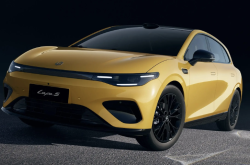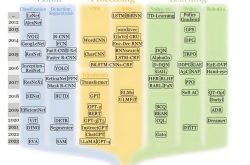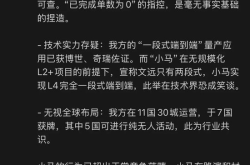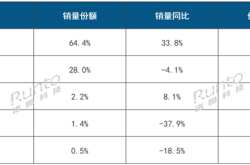Does Lenovo's Motorola Phone Still Have a Chance?
![]() 03/27 2025
03/27 2025
![]() 416
416
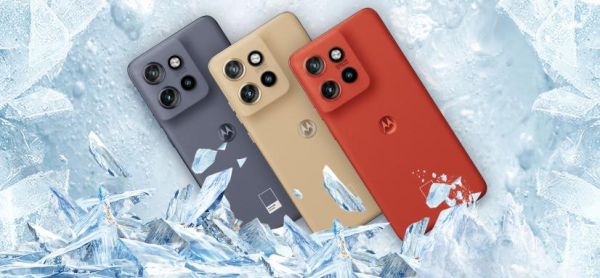
No Hope, No Disappointment
Author/ Chen Dengxin
Editor/ Li Jinlin
Typesetting/ Annalee
Lenovo's Motorola phone has once again captured the public's attention.
At the '2025 Shanghai F1 Chinese Grand Prix,' Lenovo Motorola made a significant splash as the F1 global smartphone partner.
Amidst the excitement and speed, Lenovo's Motorola phone hopes to reclaim its spot in the mainstream spotlight.
This aspiration was reaffirmed by Lenovo Group Chairman and CEO Yang Yuanqing at the earlier MWC 2025, where he stated that Lenovo's Motorola phone aims to become a leading global manufacturer, "first among the top five, then entering the top three."
Behind these bold statements lies the fact that Lenovo's Motorola phone has long been relegated to the 'other' category in China, raising questions about such a stark contrast. From being a 'top student' to a 'slacker,' what challenges has Lenovo's Motorola phone faced? Can Lenovo's Motorola phone truly turn the tide with AI phones?
Betting on AI feels like they're back in the game.
Let's take a brief look at how Lenovo's Motorola phone went from strength to weakness.
Public records show that Lenovo entered the mobile phone market in 2002, launching China's first 40-chord ringtone phone and the first self-developed GSM phone.
Based on these innovations, Lenovo phones stood out.
Not only did it become a member of the 'Zhonghua Kulian' group, but it also became the 'leader' of domestic mobile phones, rivaling international top mobile phone brands. It was a glorious time.
However, times change, and fate plays its part.
Entering the smartphone era, the burden on Lenovo phones became heavier, forcing it to embark on a path of premiumization, hoping that the LePhone would open up new growth opportunities.
"The pricing of LePhone has a clear advantage. If it can't sell as well as the iPhone, it's a failure!" Yang Yuanqing said at the time.
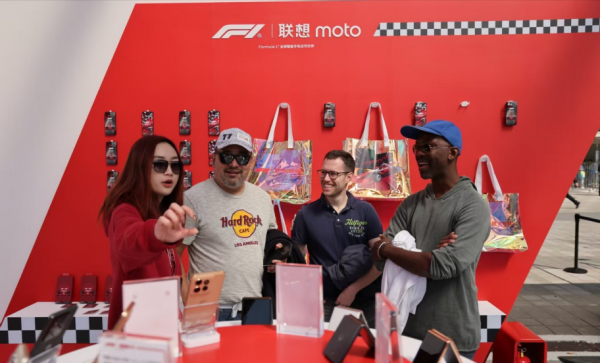
Image source: Lenovo Motorola official Weibo
The ideal was full, but the reality was cruel.
The iPhone-rivaling LePhone ultimately became a lost cause, prompting Lenovo to acquire Motorola in hopes of achieving premiumization through a detour.
However, the problem lies in the fact that Yang Yuanqing overestimated the brand value of Motorola and underestimated the difficulty of integration.
In this regard, some media have reported: "Lenovo's team looked down on Motorola's 'efficiency.' According to Motorola's research and development rhythm, the development cycle of a high-end product is at least a year, which, in the eyes of Lenovo's team, is more than enough time to produce 10 products. Conversely, the Motorola team believed that Lenovo's team lacked high-end research and development capabilities, making it difficult for both sides to sit down and discuss. While it is true that the Motorola team's efficiency is low, the Lenovo team is not much better."
With 1+1<2, Lenovo phones began to decline.
An industry insider told Xincidu that "Lenovo's mobile phone strategy did not keep up with the times. In its early years, it was deeply tied to operators, and later it became overly reliant on traditional channels, failing to catch up with the tide of online sales and deeply cultivating brand stores."
Coupled with constant strategic swings and drifting market positioning, Lenovo phones ultimately fell behind in the transition from 'Zhonghua Kulian' to 'HuamiOV.'
After failing to advance, Lenovo's Motorola phone shifted its focus to overseas markets, seeking refuge in a corner.
Coincidentally, the AI revolution erupted.
As a result, focusing on AI became Lenovo's core strategy, and it tasted success with AI PCs: In the fourth quarter of 2024, its revenue was $18.80 billion, a year-on-year increase of 20%; net profit was $693 million, a year-on-year increase of 106%.
Lenovo Group Executive Vice President Luca Rossi recently said: "We expect the penetration rate of AI PCs to reach 40% to 50% in the next 2 to 3 years, or even as high as 80%."
Against this backdrop, Lenovo intends to replicate the successful strategy of AI PCs for its Motorola phones.
Lenovo's wishful thinking is not entirely unreasonable: AI phones are becoming the next popular symbol to leverage the era, and All in AI is gradually becoming the consensus of the industry.
OPPO CEO Chen Mingyong predicted in 2024: "This year is the first year of AI phones, and the era of AI phones will become the third stage of the mobile phone industry after feature phones and smartphones."
Thus, it is not surprising that Lenovo views AI phones as a turning point.

Lenovo Motorola phone invites Dilraba Dilmurat as its spokesperson.
Zheshang Securities said: "Overseas AI vendors, represented by Apple, continue to invest in and deploy the end-side AI field, and the vertical scenario application of large AI models on the end-side is expected to accelerate."
In fact, Lenovo is not the only one eager to overtake on curves with AI.
Even small players like realme have revealed in 2024 that they plan to ship 100 million AI phones within the next three years through the 'AI Plan,' primarily targeting young consumers.
From this perspective, even though Lenovo's Motorola phone has been relegated to the 'other' category in China, it has ignited new ambitions.
It is uncertain whether it can hold onto its basic market.
Nevertheless, it is still difficult for Lenovo's Motorola phone to turn the tide with AI.
It should be noted that as AI becomes a focal point in the mobile phone sector, leading players such as Huawei, Xiaomi, OPPO, and vivo are all exploring deep integration with large models to create an AI innovation ecosystem.
For example, Apple has launched 'Apple Intelligence,' which will provide a series of AI functions for devices such as the iPhone and Mac.
Another example is that AI is fully empowering Xiaomi's 'people-car-home full ecosystem' technology strategy, where "Xiaomi will use AI to reinvent all categories."
It is not difficult to see that AI is reshaping the new value coordinates of mobile phones.
As Honor CEO Li Jian said: "If we imagine the AI ecosystem as a towering tree, then AI terminals are the trunk of this tree. Honor's core value lies in integrating all AI elements and transforming them into innovative experiences accessible to consumers."
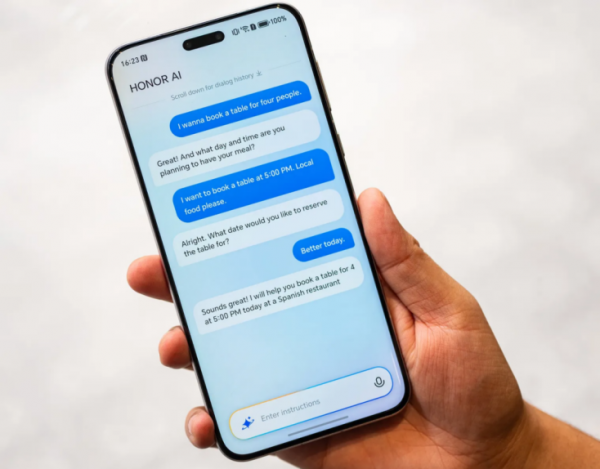
Image source: JiZhiMao
In this way, AI phones will undoubtedly become the 'main battlefield' of the industry.
After all, in this passionate era, AI drives productivity revolutions. Whoever masters new productive forces can break the shackles of innovation and gain indisputable industry leadership.
From the above, it can be seen that Lenovo's AI phones face even greater competition and pressure than in the smartphone era when it comes to carving out a path.
In fact, although Lenovo has invested heavily in AI and achieved certain results, its technological foundation is not deep, and its influence is not high, with a visible gap compared to Huawei and Xiaomi.
Regarding this, some media have stated: "Looking back at Lenovo's transformations, a half-assed approach has always been the norm. This 'loud slogans, no action' behavior stems from Lenovo's inertial growth—in the PC era, Lenovo's development strategy was always that scale is strength, and it ascended to the top of global PC manufacturers through channels and mergers and acquisitions, thus emphasizing marketing and neglecting technological research and development, earning it the nickname of an 'assembly plant.'"
What's more troublesome is that the emergence and popularization of DeepSeek have to some extent lowered the threshold for end-side AI access, suggesting that the comprehensive AI-ization of mobile phones may be a general trend in the future.
This means that Lenovo's AI phones may struggle to differentiate themselves, making it more difficult to catch up later.
A market insider told Xincidu: "Apple, Xiaomi, Honor, etc., have all launched their AI PCs, cutting into Lenovo's territory. It's uncertain who will grab whose market share. The 'Matthew Effect' in the mobile phone industry is evident, showing a pattern where the strong become stronger. Under this positive cycle, the advantages of leaders will continue to expand."
Xiaomi partnered with Leica to create a mobile imaging optical system that leads the era, taking a path to 'replace cameras'; Kirin chips and HarmonyOS continue to break through, helping Huawei embark on a path of self-research and certification, and both are also greatly empowered by the automobile industry.
In contrast, where are the turning points and opportunities for Lenovo's Motorola phone?
In fact, two years ago, Lenovo's Motorola phone shouted the slogan of becoming one of the top three in global markets excluding China. Although overseas sales have continued to grow in recent years, the status of being 'small but beautiful' has not fundamentally changed.
Canalys data shows that global smartphone sales reached 1.22 billion units in 2024, a year-on-year increase of 7%, ending a two-year decline; among them, Lenovo's Motorola phone ranked eighth globally with a 5% market share.
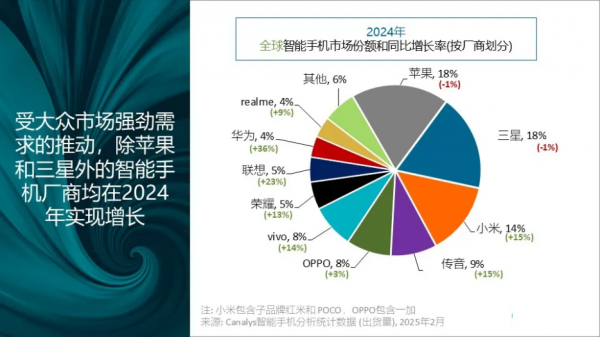
Image source: Canalys
In other words, Lenovo's Motorola phone dream has not yet become a reality.
What's worse, as the domestic mobile phone market becomes increasingly saturated, going overseas has become an essential option for the industry, with not only leading players but also mid-tier players racing to enter.
As previously reported by 'JiZhiMao': "Meizu, which has been slow to release its flagship phone this year, chose to make a high-profile display of its AI full-ecosystem family products at MWC25 and publicly released the Meizu Note 22 series of new phones for the overseas market for the first time, including the Meizu Note 22, Meizu Note 22 Pro, Meibian 22, and Meibian 22 Pro. The Meibian series is an exclusive model for the overseas market."
Under the banner of taking the lead, their overseas performance is also noteworthy.
Public data shows that Honor's overseas market annual growth rate reached 50% in 2024, with overseas sales accounting for more than 50% in December;
Xiaomi's overseas sales accounted for more than 75% of its total sales, ranking among the top three in the global mobile phone market for 18 consecutive quarters; OPPO and vivo's overseas sales also accounted for more than 50%.
vivo Chief Operating Officer Hu Baishan said during the Boao Forum for Asia that he expects the proportion of overseas sales to increase to 60% by 2026 and reach about 70% by 2027, "For us, the future growth point is undoubtedly the overseas market."
It is particularly worth mentioning that the European market has become a top priority for going overseas.
The reason for this is that the average price of the European smartphone market is $500 to $600, providing fertile soil for high-end products, which are precisely the main force for going overseas.
Even price inversion has occurred.
Take Xiaomi 15 Ultra, priced at 6499 yuan, as an example. The same model sells for 1499 euros in Europe, nearly 12,000 yuan, with a premium of over 80%.
Xiaomi Group President Lu Weibing said: "There are indeed differences between different markets, including differences in tariffs and channel costs, so they will certainly be different. But overall, it is priced higher than the iPhone 16 Pro Max in Europe, which I believe reflects Xiaomi's technological confidence and conviction."
The problem is that the European market is also a key focus for Lenovo's Motorola phone expansion.
With overlapping markets, Lenovo's Motorola phone will inevitably collide with domestic leading players sooner or later. The competitive pressure it will face in the future is self-evident. It is uncertain whether it can hold onto its basic market, let alone make further progress.
In summary, while Lenovo's Motorola phone may continue to rely on Motorola's legacy and maintain a presence overseas, it is unrealistic for it to become a leader in the global market. This cannot be solved by relying on AI or stacking materials alone. After all, without experiencing the 'hand-to-hand combat' of mainstream markets, it will be difficult to keep up with the times and will ultimately have to face dimensionality reduction strikes.
The time left for Lenovo's Motorola phone to enjoy a peaceful existence is not much.



